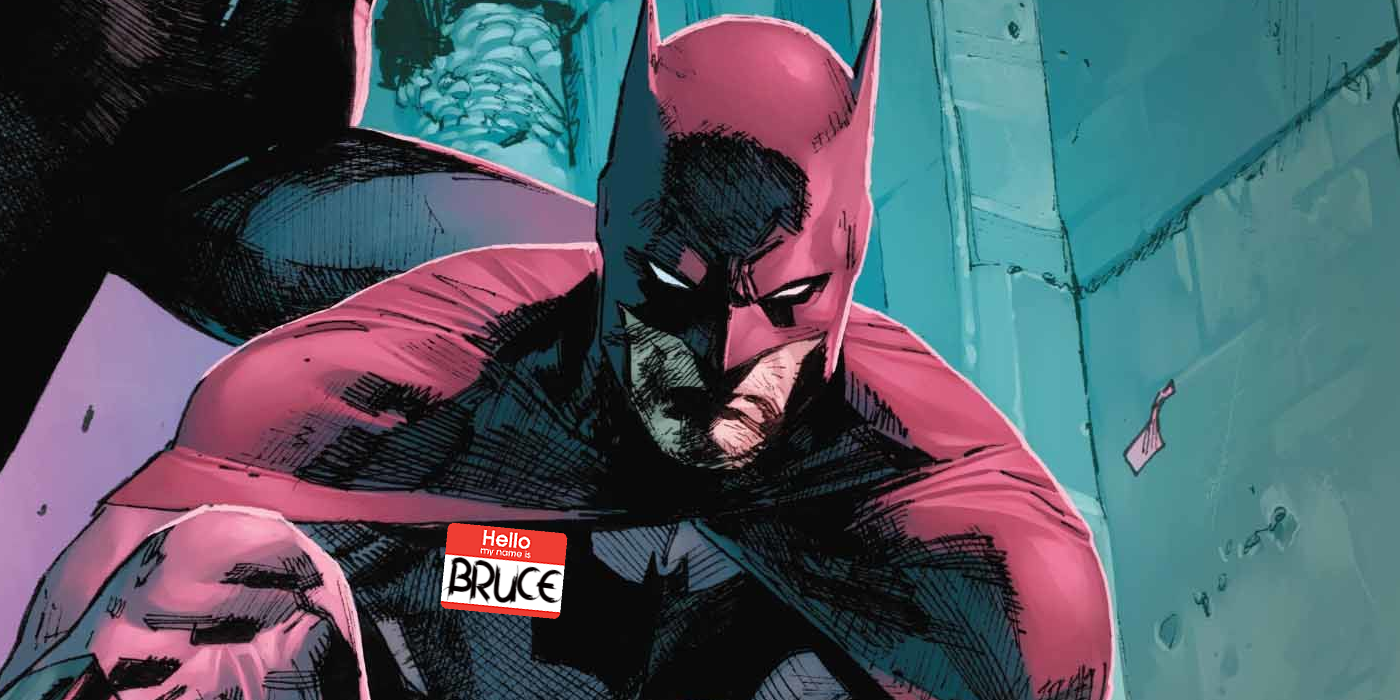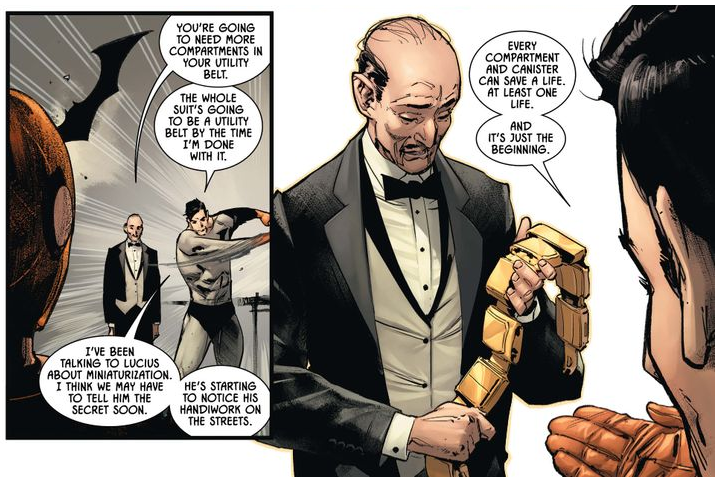
Batman gets a lot of love from even the most casual comics fan, but that means he's also the first target when superhero stories - or even comics as a medium - come under fire. One example of this is the shifting perception of the phrase "I'm Batman," but in Batman #98, DC just took back what it means when the Dark Knight makes this frequently mocked declaration.
Though such a simple phrase has obviously appeared countless times in the comics, it became more of a catchphrase after its use in Tim Burton's 1989 movie Batman, in which Michael Keaton uses it to intimidate a criminal, telling him to pass it on to his friends. The phrase reoccurred in numerous live-action movies, including Christopher Nolan's 2005 Batman Begins, and was played for laughs in media such as LEGO Batman: The Movie. Most famously in comics, Frank Miller put his own spin on the phrase in All Star Batman & Robin, the Boy Wonder, a series which depicted a wilder, more unhinged hero prone to declaring, "I'm the goddamn Batman."
It's perhaps here that the phrase really started to be used as a joke. Miller's Batman was deliberately off-kilter, and the story provided many unusual moments, whether read as a whole or parceled out into online screen grabs. But if Miller drew attention to the phrase, it's the online series How It Should Have Ended that really made it a cause for mockery. Many of the show's episodes end with Batman and Superman discussing the outcome of the latest movie parody in their "Superhero Cafe." HISHE's sulky, taciturn Batman began using "I'm Batman" as a catch-all explanation for any unlikely accomplishment that couldn't quite be explained by logic. As the Superhero Cafe segments got longer and more involved, the phrase took on new symbolic meaning - a phrase to whip out when making the argument that the Dark Knight's stories too often use the character's reputation to explain why Batman can do the impossible.

Whether it's a fair critique or not, DC's Batman #98 pushes back against what the phrase has become. The issue begins with Batman recovering from a huge dose of a new Joker toxin, hallucinating a conversation with Alfred Pennyworth, who recently died in the comics. As Bruce calls back to the early days of the Dark Knight, readers see a Batman who's more enthusiastic and optimistic than he's been in quite some time, including a touching moment that adds new weight to the idea of Batman's utility belt.
Sadly, the memory can't last, and Bruce finally admits to Alfred that, with his resources drained and used to attack Gotham City, he feels he's already lost. It's then that Alfred (or at least Bruce's idea of him) snaps.
You take yourself so seriously, Master Bruce. But Batman is a child's dream. That you can travel the world and learn every possible way to save everyone. And there's a part of you that believes you CAN. And that dream is powerful, and beautiful, and you MUST hold onto it... Be the impossible man who saves all the families on their way home from the theater.
It's an utterly hopeful and totally appropriate reappraisal of Batman not as a faultless genius whose reputation and bottomless well of pessimism bend reality in his favor, but rather as a flawed man whose dedication to an impossible mission allows him to push himself further than anyone else on the planet. When Batman emerges from the dream, swooping down on the Joker's new 'girlfriend' Punchline with a stylized "I'm Batman," it's clear that DC and writer James Tynion IV have taken back a phrase that rightly depicts Batman as a child's dream - one that should never die.
Batman #98, by James Tynion IV and Jorge Jimenez, with cover art by Francesco Mattina, David Finch, and Jorge Jimenez is available now.
from ScreenRant - Feed https://ift.tt/3h9sC5s
via IFTTT







0 comments:
Post a Comment